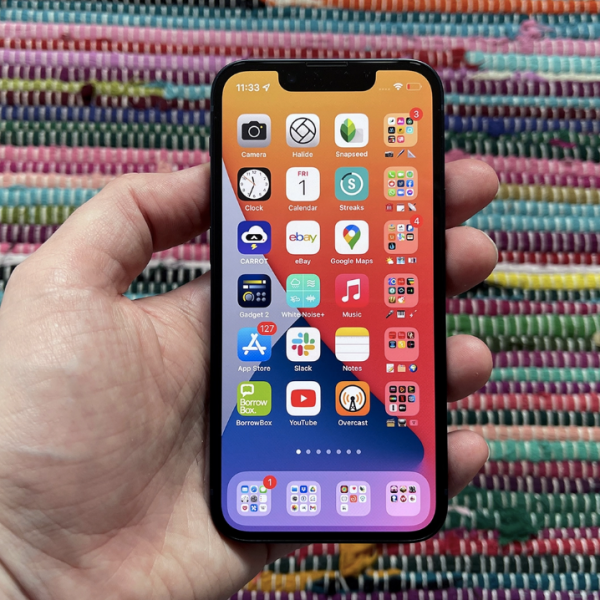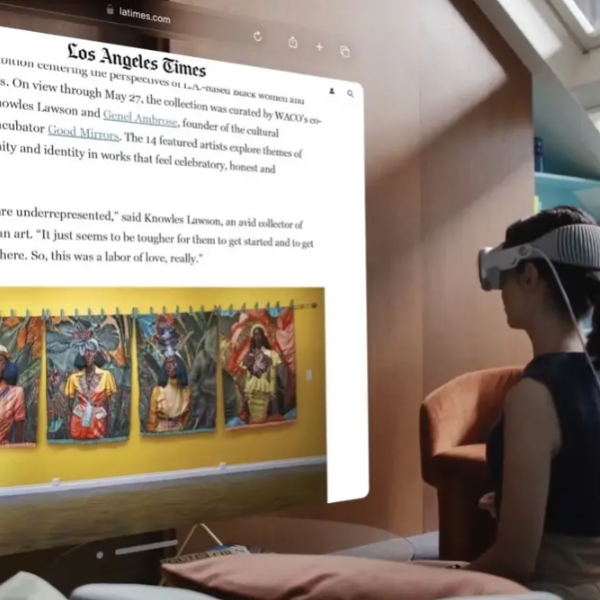Usually, the best TVs for gaming are just the best TVs overall. However, when choosing a TV for your PlayStation 5 or Xbox Series X/S, there are specific features to focus on. While you don’t necessarily need an expensive TV for gaming, the right one can enhance your gaming experience. If you’re not sure where to begin, we’ve provided some useful tips for selecting the right TV, along with recommendations for well-reviewed gaming TVs available today.
What to look for in a gaming TV
Whether you’re gaming or not, all good TVs share certain features. You’ll want a 4K resolution (which is standard nowadays), sufficient brightness, high contrast ratios with deep and uniform black tones, colors that strike a balance between accuracy and saturation, and wide viewing angles. Specifically for gaming, you’ll need a TV with minimal input lag and fast motion response, ensuring no blur or other unwanted effects during fast-moving scenes. However, finding a TV that has all these gaming features and fits your budget can be challenging.
The top OLED TVs currently provide the best picture quality for gaming and other uses. However, OLED TVs are often more expensive than their LCD counterparts, and some OLED sets may not be bright enough for well-lit rooms. If you go for an LCD TV, an advanced backlight with mini LEDs and effective full-array local dimming can enhance contrast and lighting detail, while a quantum dot filter can improve colors.
One thing you don’t have to stress about is 8K support. While the PS5 and Xbox Series X can technically handle 8K video, very few games are designed for that resolution. The practical benefits of 8K are extremely minimal unless you plan on sitting exceptionally close to a massive TV. Additionally, the few 8K TVs available on the market tend to be very expensive.
That being said, there are a few terms you should pay attention to when choosing a TV for your new game console or high-end graphics card.
HDMI 2.1
To get the best performance from your PlayStation 5 or Xbox Series X/S, your TV should fully support HDMI 2.1. This is the latest major update to the HDMI specification, offering a higher maximum bandwidth of 48 gigabits per second, up from HDMI 2.0’s 18 Gbps. It comes with features specifically beneficial for gaming performance, including variable refresh rate (VRR) and automatic low latency mode (ALLM), which we’ll explain in more detail below.
Another significant advantage of HDMI 2.1 is its capability to transmit sharp 4K video at up to a 120Hz refresh rate with modern consoles like the PS5 and Xbox Series X or up to 144Hz with a powerful gaming PC. Not all PS5 or Xbox Series X/S games support frame rates that high, and some only do at lower resolutions, but those that do will have exceptionally smooth motion. HDMI 2.1 also includes support for Enhanced Audio Return Channel (eARC), allowing you to pass higher-quality lossless audio from a source device connected to the TV to a compatible soundbar or receiver.
The more full HDMI 2.1 ports your TV has, the better. The crucial term here is “full.” According to TFT Central, because HDMI 2.1 is compatible with HDMI 2.0, manufacturers can label HDMI ports as “HDMI 2.1” even if they lack full (or any) support for the upgraded features of the specification. We recommend some TVs below that genuinely have full HDMI 2.1 ports. However, when purchasing a new TV for gaming, ensure that your chosen set isn’t trying to conceal any capabilities you might find crucial.
HDR — High Dynamic Range
HDR means a TV’s ability to show a broader range from the darkest to the brightest parts of a picture. This wider range can reveal details that might be missing on a standard dynamic range (SDR) TV, especially in very dark and bright areas of an image. HDR usually improves color reproduction, too, showing a larger range of more vibrant colors that brings content closer to how its creator intended.
To have an HDR picture, you need content that’s created to use this technology and a TV that can display it. HDR comes in different formats, usually split between those using static metadata (like HDR10) and those using dynamic metadata (like HDR10+, Dolby Vision). Simply put, the latter allows a TV to adjust its brightness and colors for each scene or even each frame, while the former uses one set of optimized settings for the entire content. Support for these formats can vary depending on your TV, content, and game console. For instance, the Xbox Series X and S support Dolby Vision for gaming, while the PS5 does not.
The good news is that most TVs available in 2023 are ready for HDR in some way, even the more affordable ones. However, some TVs are much better at maximizing the benefits of HDR than others. The same applies to actual content created in HDR. When it comes to video games, there aren’t as many titles designed to make the most of HDR compared to movies (though this number is increasing), and the difference in HDR quality can vary widely.
HGiG — HDR Gaming Interest Group
HGiG stands for the HDR Gaming Interest Group. Sony, Microsoft, many TV makers, and game developers are part of this group. Ideally, these groups share information so that when you start a new game on a console or PC, it can automatically recognize your display. Once recognized, the game can adjust its internal settings to match your display’s capabilities, providing the best picture quality without losing details in bright or dark areas of the screen. For instance, sunlight at the end of a dark tunnel should appear well-lit instead of looking like a too-bright white spot.
While this is a positive development, the reality is a bit more complex. Not all TVs prominently feature HGiG compatibility in their settings menu, and only some PlayStation and Xbox games recognize and follow these guidelines. If your TV has an HGiG option in its tone mapping settings, it’s recommended to turn it on before adjusting the console’s HDR settings. If you’re playing a game that supports HDR and HGiG, you should be in good shape without needing to adjust various luminance levels again. However, how it appears to you may vary depending on your TV and the game you’re playing. For example, owners of specific LG OLED TVs may prefer using their TV’s Dynamic Tone Mapping setting. Ultimately, use the settings that you find most visually appealing.
ALLM — Auto Low Latency Mode
ALLM (Automatic Low Latency Mode) lets a source, such as your PS5 or Xbox, instruct the display to switch to a picture mode that minimizes the delay between receiving each frame of an image and showing it on the TV. This eliminates extra processing time, potentially making a difference of milliseconds, crucial for precise input during gaming. A modern TV with this feature can automatically switch to game mode and revert to regular mode when you want to watch a movie or TV show.
VRR — Variable Refresh Rate
VRR (Variable Refresh Rate) might be familiar to PC gamers. Many have faced issues like slowdowns, screen tearing, or stuttering when a system struggles to render each frame at the target speed, usually 30 or 60 fps on a TV. VRR helps keep everything in sync: the display waits to show the next frame until it’s ready, making the experience feel smoother and more responsive, even if the system doesn’t hit the target frame rate.
There are various implementations of VRR, such as Nvidia’s G-Sync, AMD’s FreeSync, and the HDMI Forum’s VRR spec, included in the full HDMI 2.1 standard. The TV and the input device must support the same VRR tech for it to work, and different devices may only support VRR within a specific refresh rate range. For instance, on a 120Hz display, the PS5’s VRR only operates between 48Hz and 120Hz.
As a reminder, the PS5 supports HDMI Forum VRR, the Xbox Series X/S supports HDMI Forum VRR and FreeSync, and gaming PCs may support G-Sync or FreeSync depending on the graphics card. A great gaming TV supports all major VRR formats, but lacking, for example, G-Sync isn’t a dealbreaker if you only game on a PS5 or Xbox.
Good gaming TVs you can get right now
Companies like Samsung, LG, TCL, and Hisense introduced their new TVs for 2024 during CES in January. However, exact pricing and availability details are not widely available at the moment. More models are expected to be revealed in the coming months. Looking at the past, new sets announced later might not offer significant improvements over the TVs currently available, and they may come with higher initial costs. Many of the top TVs from 2023 have seen price reductions since their launch, and these prices are likely to continue dropping as manufacturers aim to sell existing stock. In most situations, buying a good gaming TV from the previous year should give you the best value for your money, at least for the next few months.
Here are our recommended TV sets below. Although we at Engadget don’t conduct formal TV reviews, we feel confident in our choices based on extensive research into user feedback and the consensus from reputable review sites we trust, like Rtings, Wirecutter, Reviewed, and PCMag, among others.
Samsung S90C
The Samsung S90C features a QD-OLED display that combines an OLED panel with quantum dots. This allows it to show a good OLED TV’s deep blacks and high contrast while maintaining better peak brightness and color saturation. It ensures smooth motion with four HDMI 2.1 ports supporting up to 4K at 144Hz. The TV supports HDR10, HDR10+, ALLM, and major VRR formats. Sizes range from 55 to 83 inches. However, like other Samsung TVs, it does not work with Dolby Vision HDR.
There’s also the Samsung S95C, a higher-end model. It can play in 4K up to 144Hz and may achieve a slightly higher brightness in HDR compared to the S90C, as per some reviews. Since it uses an external box for ports, its hardware is thinner. However, it comes with a higher price tag, making it a considerable investment.
LG C3 OLED
The LG C3 uses a WOLED panel, which may not be as bright as a QD-OLED TV like the Samsung S90C, but it still performs well in terms of contrast, input lag, motion response, and viewing angles. Occasionally, it’s available for a slightly lower price than the S90C. The TV follows HGiG’s HDR guidelines, supports ALLM, works with major VRR formats, and has four full HDMI 2.1 ports capable of outputting 4K at 120Hz with a PS5, Xbox, or PC. It also supports major HDR standards, including Dolby Vision, and comes in various sizes from 42 to 83 inches. However, it may not be ideal for brightly lit rooms, and it lacks support for a 144Hz refresh rate for those wanting maximum performance from a gaming PC.
Samsung QN90C
Consider the Samsung QN90C if you want the improved brightness of an LCD TV or if you’re concerned about burn-in, especially if you plan to play a single game for an extended period. While it may not match the contrast, response time, or viewing angles of a good OLED model, its mini-LED backlight and quantum-dot color should provide a richer image than most LCD TVs, particularly in HDR. Motion and input lag are not expected to be issues, and it can achieve higher brightness levels than the previously mentioned models. However, it still lacks Dolby Vision support. It comes in various screen sizes, with the 43- and 50-inch models capable of a 144Hz refresh rate. The rest go up to 120Hz, which is the maximum for a PS5 or Xbox Series X/S. Note that the 43- and 50-inch versions use VA panels, resulting in better contrast but worse viewing angles.
Another option is the Sony X93L, a highly-rated premium LED TV that supports Dolby Vision, albeit at 60Hz only. It can auto-calibrate HDR on a PS5. However, it has two fewer HDMI 2.1 ports than the QN90C, making it a tighter fit for those with multiple gaming devices, and its size range starts at 65 inches.
Hisense U8K
The TVs mentioned above are quite pricey. If you’re on a budget, the Hisense U8K, another QLED TV with mini LEDs, can offer good value. It might not be a better gaming TV than the QN90C overall, as it only has two full-fat HDMI 2.1 ports, and its image might lose quality when viewed from an angle. However, reviews suggest that it will still perform well in various lighting conditions for a slightly lower price, with impressive brightness levels, 4K 144Hz support, all major HDR formats, VRR, ALLM, and low input lag in game mode. Keep in mind that it may not have the same contrast as a good OLED TV, and motion may not appear as fast or smooth.
The TCL QM8 is another promising QLED option in this price range. It can achieve slightly higher brightness than the U8K and supports up to a 144Hz refresh rate in 4K or a super-fast 240Hz in 1080p. Unlike the Hisense model, it separates its eARC port from its two HDMI 2.1 ports, allowing you to keep a PS5, Xbox Series X, and an eARC-compatible soundbar connected and optimized without dealing with inputs. However, it starts at a minimum size of 65 inches, and some reviews suggest it may not be as good as the U8K at upscaling lower-resolution content, which could be a consideration for those interested in playing retro consoles.
If you’re looking to spend a bit less, the Hisense U7K offers a similar set of gaming features as its higher-end counterpart but may not be as bright or vibrant.
Hisense U6K
On the more affordable side, the Hisense U6K stands out as a budget TV with quantum-dot color, a mini-LED backlight, and full-array local dimming. According to various reviews, these features help it deliver better contrast and color volume compared to other budget models. It also supports ALLM and major HDR standards. Technically, it’s a VRR display, but like many budget TVs, the U6K is limited to a 60Hz refresh rate, so the VRR support has its limitations. It lacks HDMI 2.1 ports, and its brightness levels and motion handling may not match more expensive options. However, these drawbacks might be easier to overlook at around $350 for a 55-inch model.
The TCL Q5 is another noteworthy budget choice, being one of the few affordable TVs capable of a 120Hz refresh rate, albeit only at 1080p or 1440p resolution. It doesn’t have a local dimming feature or the U6K’s mini-LED backlight. Still, it could offer decent value for gamers focused on competitive play, willing to trade some sharpness and picture quality for a more responsive image. A similar sentiment applies to the TCL Q6, which provides slightly higher brightness levels but comes with a bit higher cost.








